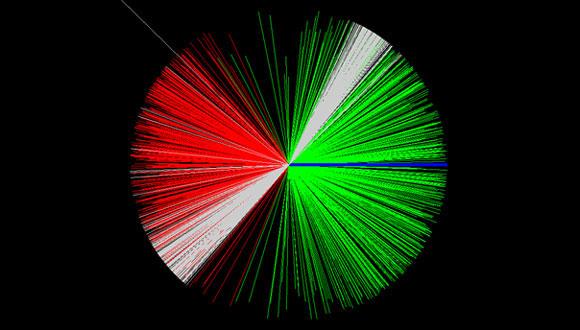Joint Seminar in Nuclear Physics
PROGRAM
14:30 - 14:45 Refreshments
14:45 - 15:45 "Beta-delayed Charged Particle Detector for Studies of Novae and X-ray Bursts" Moshe Friedman, National Superconducting Cyclotron Laboratory
Abstract:
Classical novae and type I X-ray bursts are energetic and common thermonuclear astrophysical explosions. However, our ability to understand these events is limited by the lack of comprehensive nuclear data on proton-rich nuclei. Specifically, constraining the 30P(p; )31S and 15O(_; )19Ne reaction rates has been found to be crucial to the understanding of nucleosynthesis and energy generation in these events. As direct measurements of these reactions are not technically feasible at the present time, indirect measurements of dominant resonance strengths by beta-delayed protons and alpha particles are proposed. A gas fillled detector of beta-delayed charged particles has been designed and built to measure the aforementioned decays at NSCL. The detector is coupled with the Segmented Germanium Array (SeGA) to enable coincidence detection as an additional probe of the decay scheme and for normalization purposes. The first phase of the detector functions as a proton calorimeter, and has been through a successful commissioning with 25Si(_p)24Mg and 23Al(_p)22Na during the first week of May 2018. We will report on the performance of the detector and present preliminary beta-delayed proton spectra.
15:45 - 16:15 Coffee Break
16:15 - 17:15 “Ridge in pp collisions: collectivity from interference" Boris Blok, Technion
Abstract:
In hadronic collisions, interference between different production channels affects momentum distributions of multi-particle final states. As this QCD interference does not depend on the strong coupling constant α s , it is part of the no-interaction baseline that needs to be controlled prior to searching for other manifestations of collective dynamics, e.g., in the analysis of azimuthal anisostropy coefficients v n at the LHC. Here, we introduce a model that is based on the QCD theory of multi-parton interactions and that allows one to study interference effects in the production of m particles in hadronic collisions with N parton-parton interactions ("sources"). In an expansion in powers of 1/( N c 2 - 1) and to leading order in the number of sources N , we calculate interference effects in the m-particle spectra and we determine from them the second and fourth order cumulant momentum anisotropies v n {2} and v n {4}. Without invoking any azimuthal asymmetry and any density dependent non-linear dynamics in the incoming state, and without invoking any interaction in the final state, we find that QCD interference alone can give rise to values for v n {2} and v n {4}, n even, that persist unattenuated for increasing number of sources, that may increase with increasing multiplicity and that agree with measurements in proton-proton (pp) collisions in terms of the order of magnitude of the signal and the approximate shape of the transverse momentum dependence. We further find that the non-abelian features of QCD interference can give rise to odd harmonic anisotropies. These findings indicate that the no-interaction baseline including QCD interference effects can make a sizeable if not dominant contribution to the measured v n coefficients in pp collisions. Prospects for analyzing QCD interference contributions further and their possible relevance for proton-nucleus and nucleus-nucleus collisions are discussed shortly.


